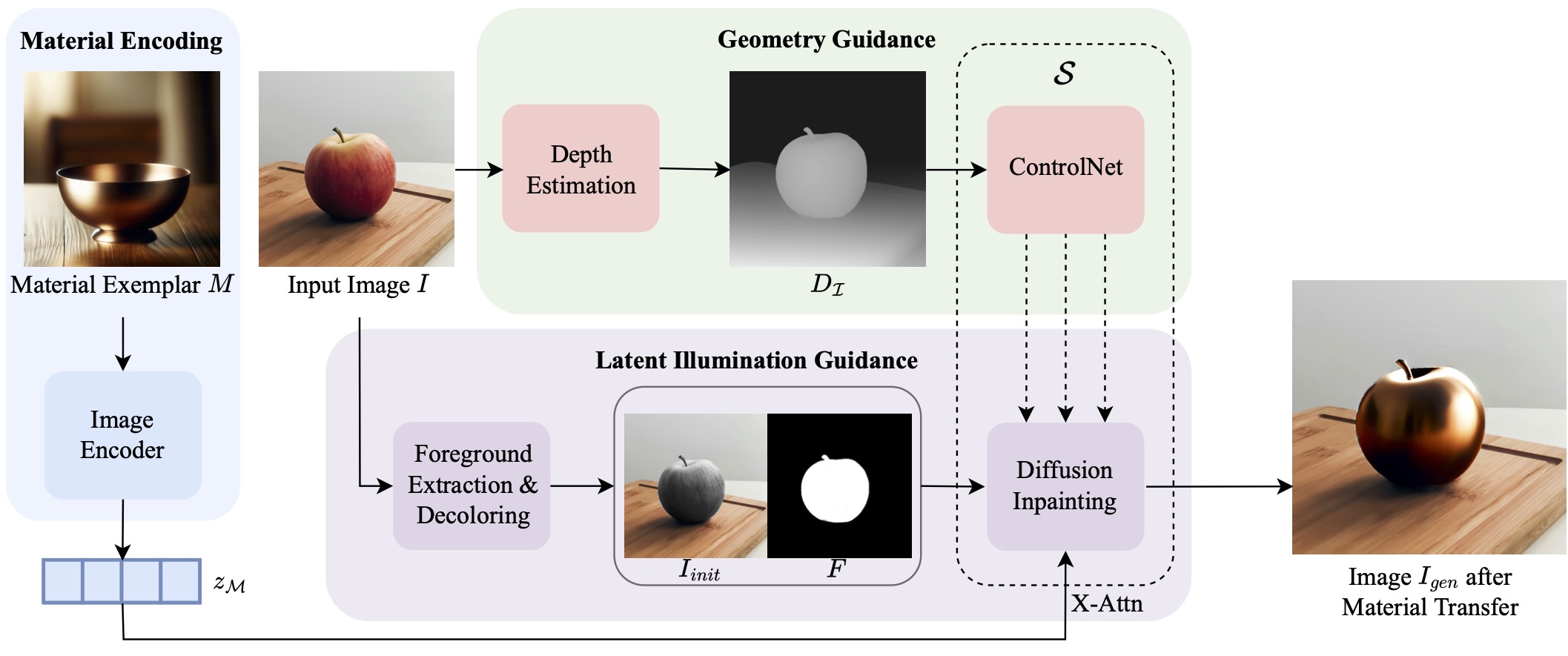This is the official implementation of ZeST: Zero-Shot Material Transfer from a Single Image. Given an input image (e.g., a photo of an apple) and a single material exemplar image (e.g., a golden bowl), ZeST can transfer the gold material from the exemplar onto the apple with accurate lighting cues while making everything else consistent.
Thanks to Sylvain Filoni, demo is also available on HuggingFace!
This work is built from the IP-Adapter. Please follow the following instructions to get IP-Adapter for Stable Diffusion XL ready.
We will begin by cloning this repo:
git clone https://github.com/ttchengab/zest_code.git
Then, install the latest the libraries with:
cd zest_code
pip install -r requirements.txt
Then install IP Adaptor and download the needed models:
# install ip-adapter
git clone https://github.com/tencent-ailab/IP-Adapter.git
mv IP-Adapter/ip_adapter ip_adapter
rm -r IP-Adapter/
You can download models from here and store it by running:
# download the models
git lfs install
git clone https://huggingface.co/h94/IP-Adapter
mv IP-Adapter/models models
mv IP-Adapter/sdxl_models sdxl_models
After installation and downloading the models, you can use demo.ipynb to perform material transfer from a single image and material exemplar. We provide one image of each for demonstration.
Simply place the image into demo_assets/material_exemplars and change texture variable in demo.ipynb to the name of the image.
To use your own input images, we would need to borrow depth predictions using DPT.
Install DPT:
git clone https://github.com/isl-org/DPT.git
Then, download their weights here and put it into the DPT/weights folder.
Place your images inside DPT/input/ and obtain the results in DPT/output/ by running:
python DPT/run_monodepth.py
Afterwards, place all your files from the DPT/input/ and DPT/output/ into demo_assets/input_imgs and demo_assets/depths, respectively. Change obj variable in demo.ipynb to the name of the input image.
To run Gradio demo:
python demo_gradio.py
Note that both images should be size of 1024x1024 to obtain best results.
It should provide the following interface for you to try. Make sure you install DPT following the section above.
To cross-inference on a set of input images and material exemplars, first create the following directory:
mkdir demo_assets/output_images
Follow the above steps to obtain and place all the material exemplars and corresponding input images/depths into their directories.
Then run:
python run_batch.py
To visualize all the batch results, we utilize the HTML4Vision library, which can be installed with:
pip install html4vision
Then, run:
python visualization.py
This will generate an html file index.html in the same directory that contains all the results after material transfer.
If you find ZeST helpful in your research/applications, please cite using this BibTeX:
@article{cheng2024zest,
title={ZeST: Zero-Shot Material Transfer from a Single Image},
author={Cheng, Ta-Ying and Sharma, Prafull and Markham, Andrew and Trigoni, Niki and Jampani, Varun},
journal={arXiv preprint arXiv:2404.06425},
year={2024}
}



